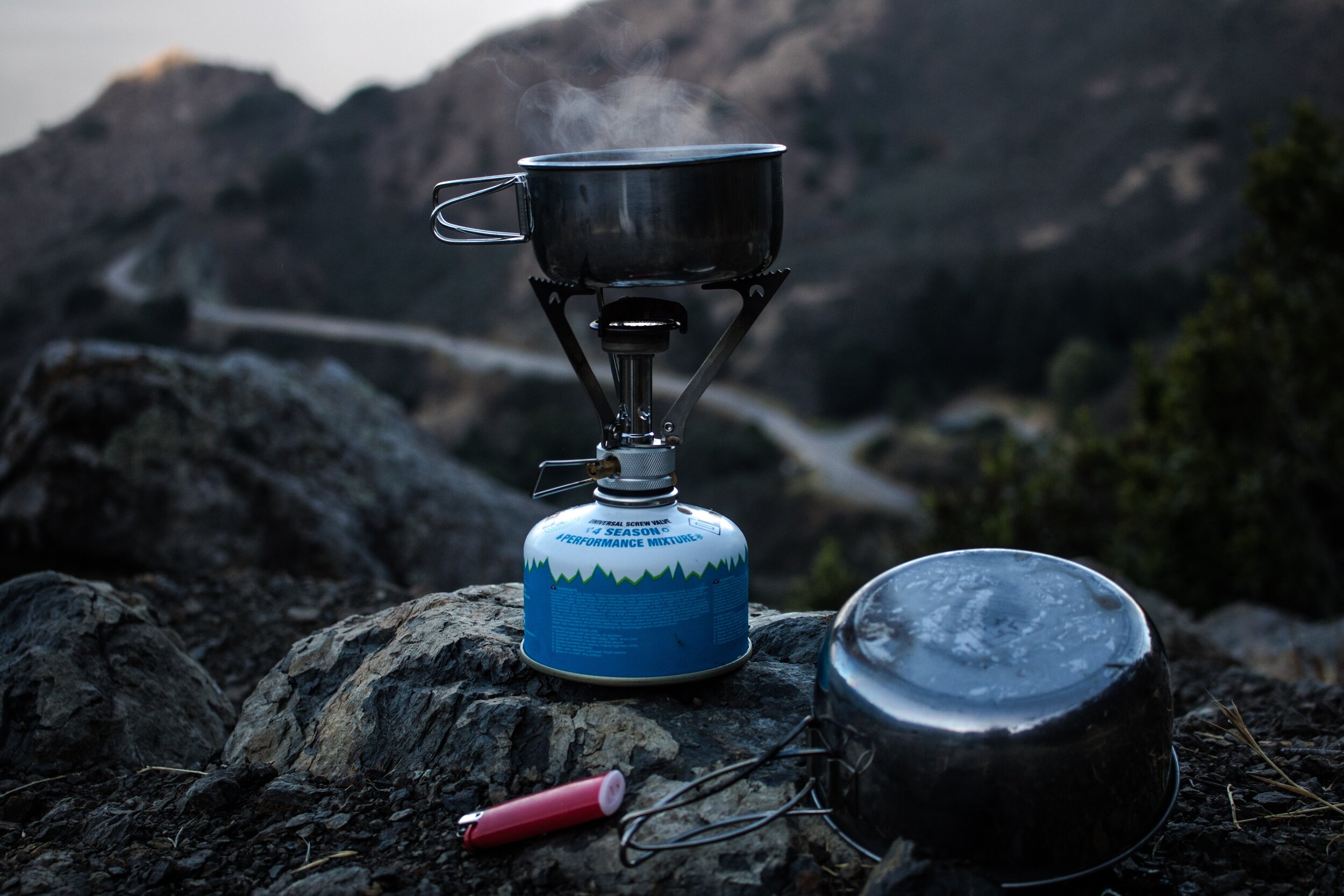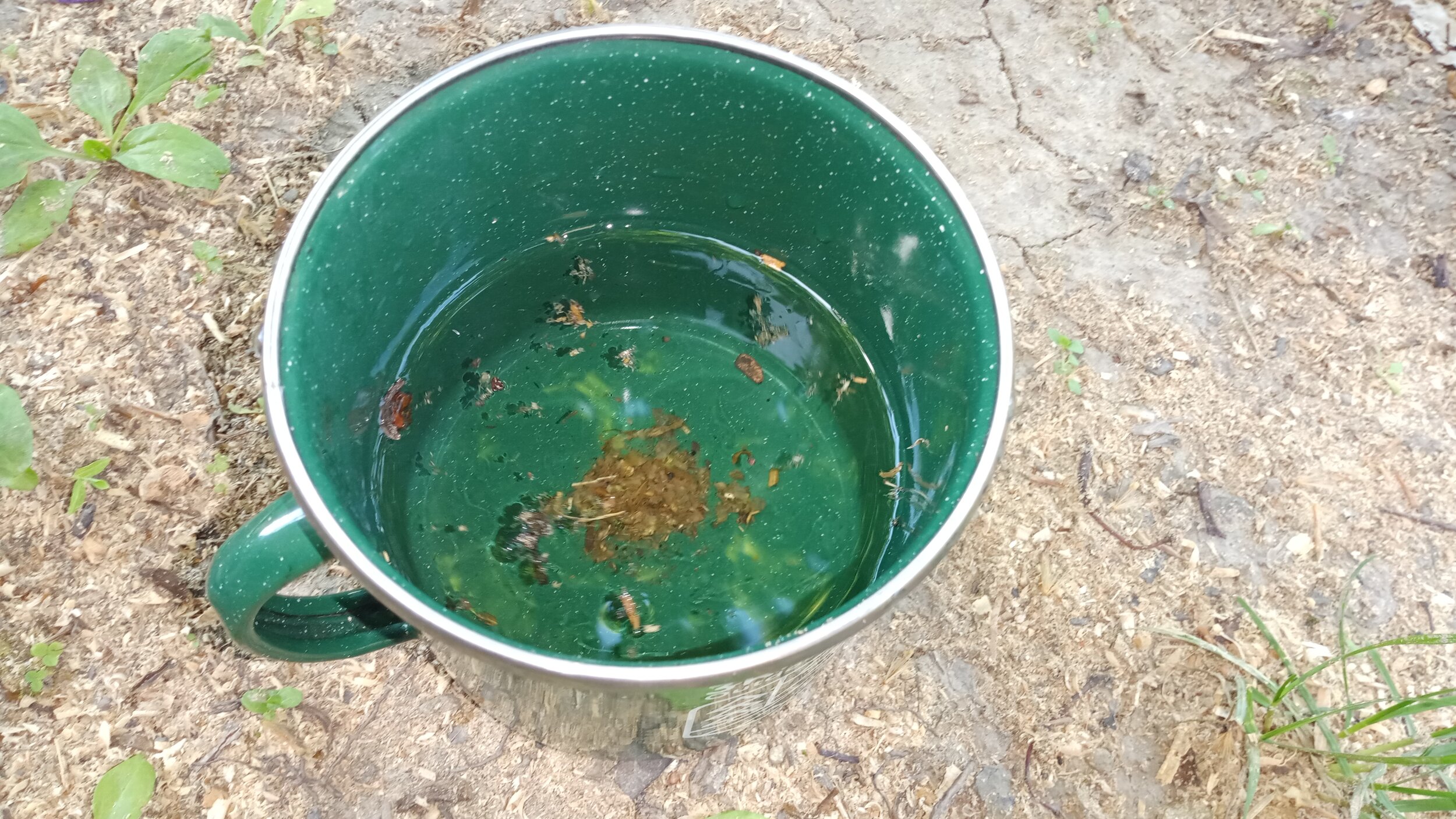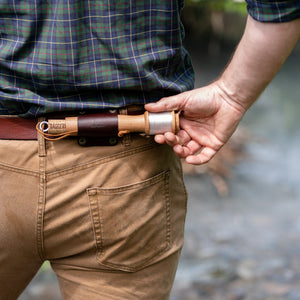Couch-2-Campsite #3: How To Boil Water
Learning to boil water in the backcountry addresses two important aspects of being in the wilderness: what will you eat, and what will you drink? Dehydrated food, of course, needs water added to it to be edible, but even non-dehydrated foods often benefit from being cooked or warmed in hot water.
But even more important than eating is drinking. I’ve drunk unfiltered water from a mountain spring, but those opportunities are few and far between. More often, we’re in the position of taking water from a stream or lake and making it potable. There are lots of impressive filter systems available now (I use a Sawyer system and am very happy with it) but we don’t need a water filtration system right off the bat. Boiling water is still one of the safest methods of purifying water, and using nothing but a cooking pot and a bandanna, we can make most water safe to drink.
Here’s how:
Get a pot
I use a 24 oz stainless steel pot from the Stanley company when I’m camping, but any pot will do. Scrounge in your kitchen or go to your local goodwill and pick up a a small saucepan to practice with. Don’t get a non-stick pot (they’re too fragile) and don’t worry about a fancy titanium pot for now. A simple, stainless steel pot is all you need.
Strain water through a cloth
A simple cloth can filter most large particulates from water, and the boiling will take care of pathogens. Source the cleanest water you can, then pour it through a handkerchief into your cooking pot.
Round 1: Use a camp stove
Boiling water over a camp stove is fast and easy, and demonstrates that boiling water isn’t complicated: add enough heat for long enough and it will happen. Camp stoves have become much more affordable in recent years, and the'y’re easy to find online. I use this style, of which there are lots of versions, basically any of which will work fine. They run off of a pressurized isopro gas canister like these.
Whatever you use, take it outside, follow the instructions for starting the stove, and set a small pot of water (24 oz or less) to boil. In a few minutes, the water should be boiling. Once it boils, filtered water is ready to use for cooking. If it’s unfiltered, let it boil for a minute (or up to five minutes at high altitude) and boom, you’ve made that water safe to drink.
Round 2: Don’t use a camp stove
Boiling water with a camp stove is the most common method for cooking in the backcountry, but if you run out of gas, any source of heat can be used in its place. Remember the fire building technique we developed in C2C #2? Let’s put it to use.
Build up a campfire and let it burn down to coals. Set the pot in the coals and build up a nest of smaller kindling around it. Once it lights to a small fire around the pot, keep feeding it small sticks until the water in the pot starts to boil. Keep the handle away from the flames as best you can, and keep the lid on the pot to prevent ash from getting into the water.
After the water boils, let the fire burn down and allow the handle of the pot to cool. Once it’s safe to touch, use a thick leather glove or a stick to lift the pot out of the water, then use the water for drinking or eating.
Heat+water+time = boiling. The source of the heat doesn’t matter, and if you can boil water, a lot of new opportunities for camping will become available to you. Practice this skill with the challenge below:

C2C CHALLENGE 2: MAKE TEA
Make two cups of tea, one using a camp stove and the other using a camp fire.
So now we know how to cook and purify water. But how much food do we really need to take?
Header Image credit CSG Beach Gear Ltd






























